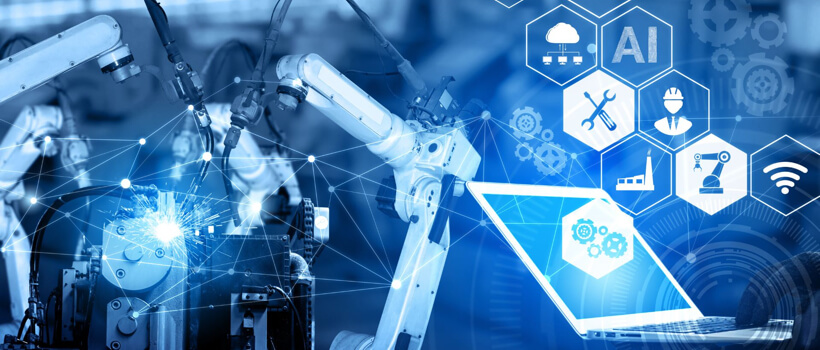 1-800-805-5783
1-800-805-5783 
Product engineering services involve creating an electronic product using industrial design, hardware design, and embedded software techniques. Various digital product engineering consulting firms serve wearable goods, medical devices, aerospace & military, industrial products, automotive electronics, and many more industries.
Product engineering services use various programming tools & devices, memory devices, microprocessors, operating systems, interfaces, and UI tools to develop and engineer a product. To ensure the safe and secure deployment of products, it also carefully examines many quality and environmental requirements.
Product engineering encompasses the creation of an item, device, article, assembly, or system, bridging the gap between design and production. A product engineer must consider the product’s complete lifecycle, a definition applicable to software and hardware goods. What is product engineering, precisely? It’s the systematic approach to developing products, ensuring they meet quality standards, regulatory requirements, and customer expectations. Product engineering plays a significant role in product manufacturing, monitoring various product characteristics, including usability, cost, dependability, longevity, and serviceability.
The complete product lifecycle—from the conception of an idea, analysis, and design to product development and deployment—is handled by a product engineering process.
Various stakeholders are involved in this process, including product managers, technical architects, business analysts, etc. For a while, product development companies have understood how crucial it is to create user-centric products that fulfill an unmet social need.
Product engineering brings ideas to life and translates product visions into tangible, functional realities. Let’s explore this dynamic field through crucial statistics and data:
Global Market Size and Growth:
Market Growth and Adoption:
Emerging Technologies and Trends:
Skillsets and Talent Shortages:
Focus Areas and Priorities:

A product engineer plays a significant role in creating goods, machines, and systems. Without product engineering, a product would only exist as an idea or non-working, non-replicable model. The product engineer’s job is to provide the development and production teams with the technical know-how and procedures necessary to bring the product to life.
The product engineer collaborates closely with the designer or design team to ensure that the functionality and aesthetics complement the client’s objectives.
The product engineer collaborates closely with the manufacturing team to ensure the product can be produced most efficiently and economically. A product engineer may also need to develop production or assembly processes and materials to achieve the client’s functionality, manufacturing, and usability objectives.
As a result, engineers with expertise in product development typically participate in all phases of software development. Suppose we break down this process into stages. In that case, a product engineer’s potential contribution to developing a software product will look like this:
Ideation And Design:
Product design engineering is pivotal in the initial stages of new product development. Product engineers are tasked with transforming a unique idea into a tangible concept that aligns with market demands and technological feasibility. Drawing from market research findings, they evaluate the compatibility of the original vision with current market conditions, making necessary adjustments to enhance market fit.
Additionally, product design engineers conduct independent research to delve deeper into the functionality and technical requirements needed for product development. Alongside technical considerations, they meticulously analyze the potential return on investment to ensure the project’s viability. This culminates in developing comprehensive project plans and product specifications, setting the stage for further stages in the product development lifecycle.
Technology And Architecture:
Product engineers take part in creating an efficient design for a product that is both affordable and user-friendly. They operate as a manager and coordinator during the development process, supervising the work of developers, facilitating communication between various team members, and ensuring that the project money is used as effectively as possible.
Technology is a vital component of the development and manufacturing process. Engineers Create and test products using various technologies and methods, including computer-aided design (CAD), computer-aided manufacturing, and simulation software, before physical prototypes, which can assist lower development costs and shorten time to market.
As for product design engineering and construction, architecture is crucial in ensuring it adheres to the desired performance and functionality standards.
The effectiveness, dependability, and scalability of the product are all guaranteed by a well-designed architecture. Also, maintaining and improving the product might be more straightforward in the long run to maintain and improve the product.
Instances And Testing:
Product engineers develop and carry out precise functionality testing for a product’s initial and subsequent versions.
Along with establishing and carrying out all necessary revisions, they help process the outcomes.
Integration And Automation:
Depending on the particular needs of the product and the systems involved, product engineers employ a range of approaches to integrate and automate their products. Product engineers might use typical techniques:
Many contemporary products are created using a microservices architecture. Various product components are designed as independent, more minor services that interact with one another via APIs.
Overall, having a clear grasp of the needs of the product and the systems involved and selecting the appropriate tools and procedures for the job is essential for successful integration and automation.
Product engineers also need to be adept in monitoring and enhancing the performance of their products over time, as well as debugging and problem-solving.
Launching And Servicing:
Product engineers examine if a product satisfies all the required quality standards and is prepared for sale. They actively analyze sales and user feedback when the product is released. They also help plan and execution of improvements for upcoming product iterations.
Adaptable Engineering:
Breaking up complex activities into short, brief cycles, including feedback and iterations, can make the product engineering process quicker and more interactive.
Focused MVP:
A minimum viable product, or MVP, has enough features to draw early adopters and verify a new idea early in the product development cycle.
Moving forward rapidly while saving time and money is possible by prioritizing the product’s fundamental functionality and putting off the early stages of the project’s quest for the best design or technological solutions.
Modern Architectural Style:
Numerous teams or specialists working independently develop and implement the product’s design, which aids workload distribution and boosts organizational resilience.
Microservices- An application is structured using the software architecture approach known as microservices, a set of loosely linked, independently deployable services.
Each microservice is created with a unique business function in mind, and they all interact with one another via lightweight protocols like HTTP or messaging platforms like RabbitMQ or Kafka.
Each service in a microservices architecture may be created, deployed, and scaled independently of the other services, simplifying system upkeep and updates. Each service is usually executed separately and may have been developed using a different programming language or data storage technology.

Hardware design, PCB layout and analysis, application development, testing, product prototype, production, and product lifecycle management are just a few of the phases of a typical product engineering process. Let’s examine each stage in greater detail.
Product engineering handles every stage of the product life cycle, from creativity (when a concept is first developed) to deployment and use acceptability testing.
Here are a few instances to help you better understand various product engineering examples:

A Unit Test: Finding software bugs is not the only goal of unit testing. It details the desired behavior of computer programs. The execution of expected behavior represents the tested code. The unit test offers a safeguard by confirming each code’s accuracy. The test is more likely to fail if the tested code is altered. Maintaining software functioning will be simpler if sufficient testing covers the code.
Engineering Discord: Businesses frequently use distributed systems to improve operations. Even when services are running smoothly, disruptions may occur, and unpredictable outcomes could emerge. Productivity may suffer if disruptive occurrences are coupled with unpredictability.
A reputable software product engineering business must consider software implementation. They might offer an answer to disturbances.
Even though this might not resolve the bugs, it might aid in locating some of them. Engineers should repeat the procedure for the best outcomes. The goal is to find program flaws before they have a significant impact.
A unit within an organization may experience a vulnerability if it receives excessive traffic. It might also happen due to a single failure or lack of service availability. When tackling the most critical weaknesses, be more proactive. This will facilitate quick problem-solving.
Emphasis On Project Scope: The best approach to determine whether a product is viable is to reduce the project scope. A software product engineering services company developer must reduce the area until it is nearly challenging to reduce it further. Making the project flexible and efficient is your aim.
The project’s scope will keep expanding, and unforeseen events could happen. Will also face Optimistic predictions in the corporate world. A technology officer can feel pressed for time.
Measure Crucial Variables: Regardless of expertise level, measuring critical parameters is crucial for all software engineers. People frequently make conscious or unconscious choices that affect their actions and behavior.
For instance, someone who measures bugs might aim for a specific metric. This person might optimize the bug count because the metric might be centered on it.
Anything that is not optimized or measured could reach critical levels. Operating expenses, quality control, and system complexity are crucial variables to track. If the application fails, solving problems without measuring essential data will be challenging.
The project’s results depend on the metrics you use. Examine whether improving the metrics can produce the best results. When the optimal goal is achieved through natural gamification, well-designed metrics are advantageous.
Consistency in Program Codes: Code your programs consistently. A consistent code of conduct is crucial when working on projects with a team. ESLint is one resource for applying a uniform style. This program has grown in popularity due to its simplicity of configuration.
Other utilities are JSCS (Javascript Style Checker) and Editorconfig. The JSCS format is outstanding and user-friendly. Editorconfig’s consistency allows use with various editors and practical IDEs.
The ideal place to begin is with sound MVP engineering. Good software written with modular interfaces produces desirable results. Coding programs will allow your teams to run smoothly. Thanks to good development techniques, the software becomes less susceptible to attacks.
Quick Application Development: Rapid application development is the best method when your business’s objectives are precise and confined. They created this method in response to the urgent necessity for software development. Software development using a linear sequential model is done quickly with RAD.
In product engineering, Docker is a well-liked platform for developing, deploying, and managing applications in a containerized environment. Docker containers offer a consistent runtime environment across several platforms and operating systems and are compact and portable.
Docker containers are used in product engineering to combine an application’s code, dependencies, and runtime environment into a single image. Applications can then be easily moved between development, testing, and production environments by deploying this image on any Docker host.
Moreover, Docker offers management and scaling tools for software, such as Docker Compose for multi-container applications and Docker Swarm for clusters of Docker servers.
Ultimately, Docker has become a crucial part of contemporary product engineering because it allows teams to develop and deploy applications more quickly and dependably while streamlining the management of intricate distributed systems.
The software developer uses the component-based building to accomplish speedy development. Teams work on user design, cutover, requirements planning, and construction, among other things.
User interaction is one advantage of RAD.
Designing, creating, testing, and improving a product to satisfy consumer wants and expectations is known as product engineering. A product engineer oversees and manages the entire product development process in the context of product engineering.
The following is an overview of product engineering from the product engineer:
The product engineer collaborates with the design team to develop a product concept, taking into account the client’s demands and preferences as well as any technical constraints.
Product development: After the product design is complete, the product engineer collaborates with the development team to produce a prototype. They make sure the item complies with the requirements and standards.
The product engineer does product testing to ensure the product is reliable, effective, and safe. They collaborate with the testing team to find any flaws or problems that need to be fixed.
Enhancing the development: The product engineer monitors and improves the product even after it is released. They gather customers’ comments and use this data to improve the product.
Ultimately, the product engineer is essential in ensuring the final product meets the consumer’s demands and expectations. To succeed in this position, they must have a solid grasp of the procedures involved in product development, technical expertise, and problem-solving abilities.
Despite being a relatively new term in the technical language, “product engineering” has garnered a lot of momentum and is now assisting enterprises in accelerating their commercial operations.
Additionally, it increases efficiency and is crucial in boosting ROI, which lowers costs and boosts production. It becomes vital for growing your clientele and gaining additional user knowledge for formulating profit-driven plans.
Product engineering is essential to creating a successful product. It entails creating a unique product concept, determining the best approach to represent it, and establishing the course for the entire process. Because of this, product engineers are involved in practically every level of the development process.
They handle both managerial and technological issues. Unsurprisingly, sound product engineers must possess expertise, accountability, and relevant work experience. Since finding such a candidate for an internal role can be challenging, so many companies work with outsourcing service providers. These services, among others that aid with software development, allow for the outside generation of new ideas.
Tags: Product Engineering